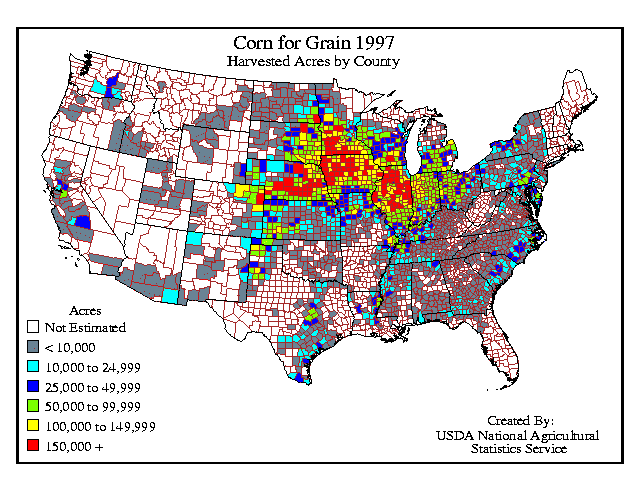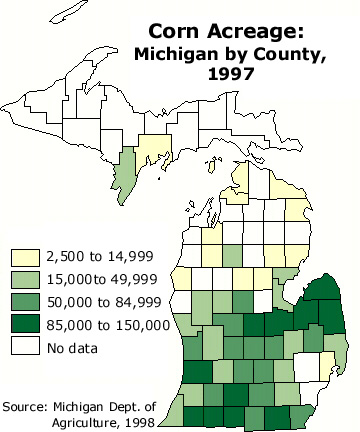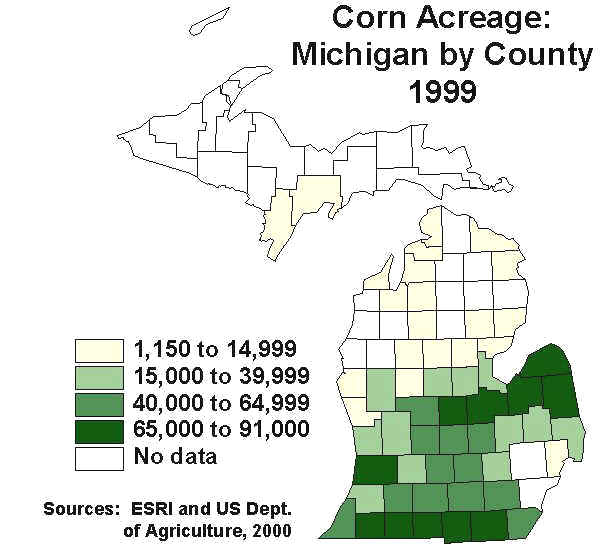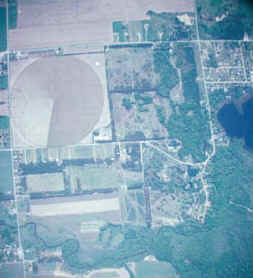CORN
Most of the corn grown in the United States is produced in the Corn Belt, which
includes Iowa, Illinois, Minnesota, Indiana, Nebraska, Ohio, Missouri and South Dakota.
Within the USA, Michigan sits at the NE extremities of the corn belt. The map below
shows where the corn belt lies.

Producers in the United States feed most of the corn crop to cattle, hogs, sheep and
poultry. The rest is used for processed food or industrial products such as cornstarch and
plastics.
The different types of corn include dent corn, sweet corn, flint corn,
popcorn, and flour corn. Dent corn and flint corn are commonly called "field
corn" because they are fed to animals. Sweet corn, popcorn and flour corn are used
for human food.
Source: Photograph by Randy Schaetzl, Professor of Geography - Michigan State University
Corn continues to be Michigan's NUMBER ONE CROP in terms of planted and harvested
acres, and value of production.
Source: Unknown
Michigan produced 236.5 million bushels of corn for grain in 1993.
Source: Unknown
Source: Unknnown
Sometime between late September and November the corn will be dry enough to be picked, or
harvested. Corn is harvested by a large machine called a combine. The combine cuts off the
plant, removes the ear of corn and separates the kernels from the corn cob. The corn
stalks and corncobs are left in the field to protect the soil for the next year.
After harvest, the corn kernels will go to a processing plant to be made into food. Corn
makes oil, syrup, cereal, starch and more than 1,000 other products you can buy at the
grocery store.
Corn kernels are used to make fructose, a liquid sugar used to sweeten
soda pop and bakery goods. Cornstarch is also made from corn. It can be used to produce
packaging materials which help protect the environment. Ethanol is made from corn and is
used as fuel for cars, trucks and buses. Corn grown in the United States is also shipped
to other countries such as Japan, Russia and Mexico.
Grain yields in the 1990's have averaged about 110 bushels per acres.
Michigan harvested 330,000 acres of corn for silage and averaged 12.0 tons per acre.
The southern 1/3 of the lower peninsula is considered as part of the midwestern US "Corn Belt". The northern limit of the corn belt is reached in Michigan, somewhere around Clare. North of there, corn has a difficult time ripening, due to the shorter growing season. Also, north of Clare the soils get sandier and are not as fertile.


Source: Michigan State University Department of Geography
Most corn in the US is grown for feed to animals or as food for humans. However,
large acreages of corn in SW lower Michigan are devoted to the production of hybrid seed
corn. The fertile, sandy soils in this region, coupled with abundant shallow
groundwater supplies, allows farmers to exactly control the soil moisture in their fields
through irrigation and subsurface drainage. Thus, yields are maximized and seed corn
quality is high. The largest Pioneer seed corn plant in the western world is located
in Constantine (St. Joseph County), on sandy outwash plains
with fertile Mollisol soils. Irrigation in the region
is typically done via large center-pivot irrigation rigs, which make circular field
patterns as shown below.

Source: Unknown
Corn is used for a number of purposes, from human food (corn flakes, corn meal) to sweeteners (high fructose corn syrup). However, the main use of corn is as cattle feed.
This material has been compiled for educational use only, and may not be reproduced without permission. One copy may be printed for personal use. Please contact Randall Schaetzl (soils@msu.edu) for more information or permissions.
